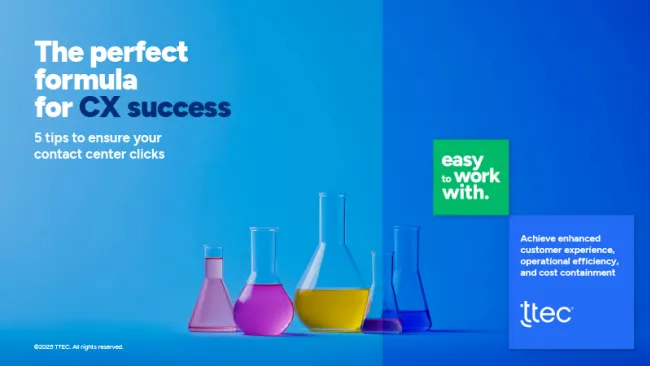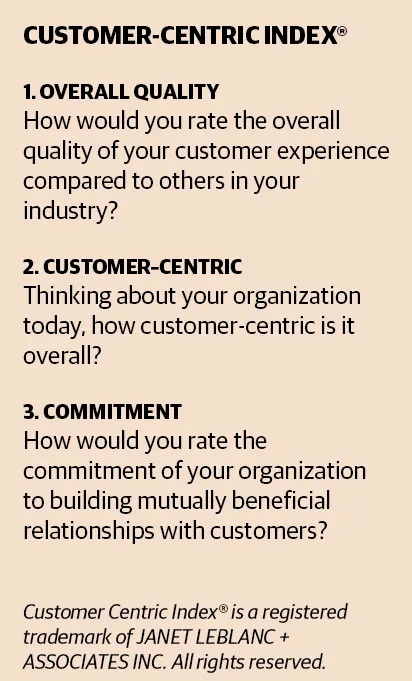
No longer a nice-to-have, organizations now see customer centricity as a must-have mindset and business practice. But companies that are on the cusp of truly prioritizing customer experience are also entering the most difficult transformation stages, according to new research. “What is Your Customer Centric DNA?” is a longitudinal study conducted in partnership with Janet LeBlanc + Associates that has tracked the state of customer centricity across North America since 2012. In the latest report, we surveyed 124 senior leaders across different industries such as technology, healthcare, financial services, consumer packaged goods, and the public sector, to gauge the current state of customer experience management.
Survey responses were mapped along the Customer-Centric Index®, a composite of three measures used to map an organization’s degree of maturity across four phases (Infancy, Developing, Transforming, and Truly Customer-Centric) of a journey toward true customer centricity. The research finds that executives have completed some of CX’s lowest hanging fruit, and most now find themselves with a tougher challenge: weave customer centricity into the organization as a whole, rather than in just pockets or siloed departments. The following research delves into key findings and insight.
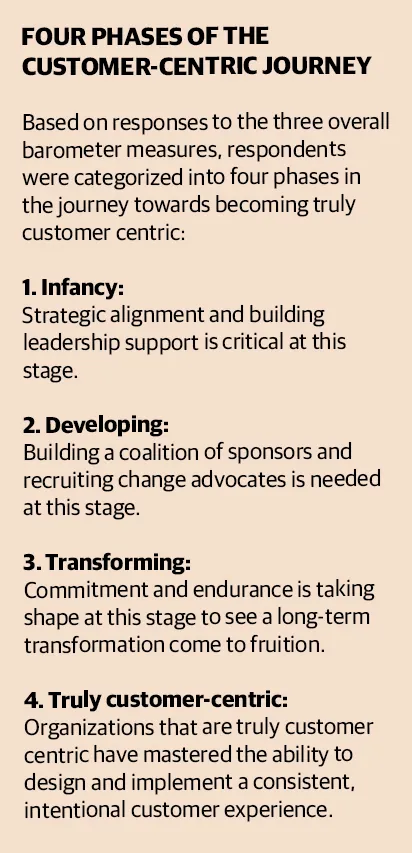
The pillars of customer centricity
Janet LeBlanc + Associates identified five areas of focus that are the building blocks of an organization’s customer-centric DNA: Strategic Alignment, Senior Leadership, Customer Insights, Employee Engagement, and Measurement and Rewards. Here are key takeaways on the progress companies have made across each pillar.
1. Strategic Alignment: Company strategy is increasingly in lock step with CX priorities
Customer centricity and company strategies are becoming increasingly intertwined as CX transformations mature. In 2020, 40% of respondents said their company regularly communicates the importance of a customer-centric culture, up from 33% in 2012. And 38% hire customer-focused executives, a 15% increase from 2012. But companies still have a long way to go, LeBlanc says. CX leaders are “those who have mastered the ability to intentionally design and consistently deliver the ideal experience across multiple channels,” says Janet LeBlanc, president of Janet LeBlanc + Associates.
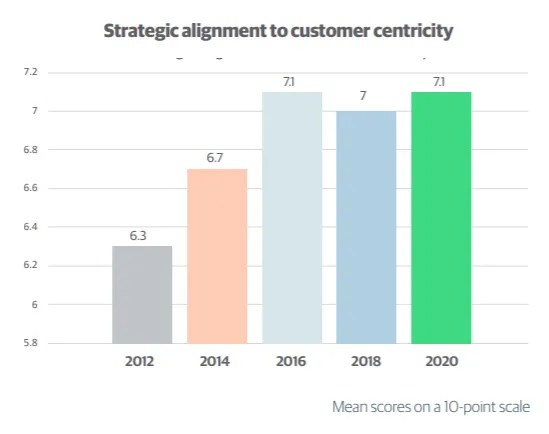
2. Senior Leadership: The C-suite takes the reins in leading customer centricity efforts
The pandemic certainly “accelerated trends that were already developing,” LeBlanc says. Consider senior leadership, which experienced a jolt in 2020. It has been all hands-on-deck as senior leaders attempt to guide their organizations through the pandemic, LeBlanc noted. “Now senior leaders—not just the customer experience practitioners—are re-examining their CX and what the possibilities are in terms of being able to deliver service.”
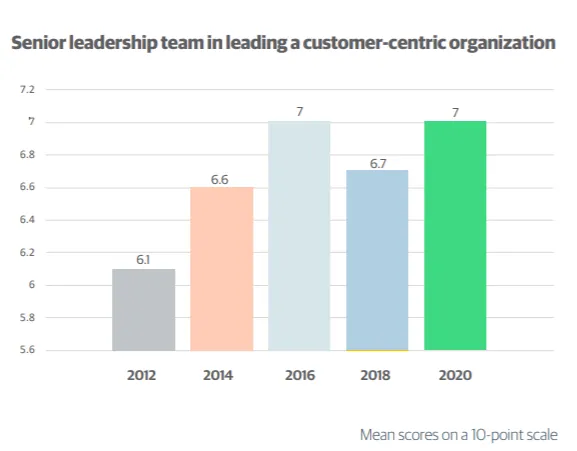
3. Customer Insights: Organizations are picking up the slack in using data to improve CX
Customer insights is another area where companies accelerated their efforts after a previous slowdown.
“Uses customer feedback to improve customer communications” (20% increase since 2012) and “regularly asks customers to evaluate performance compared to competitors” (15% increase) were some of the areas showing the most improvement. Companies are also using more real-time data. 24% of respondents said they’re gathering customer feedback in real-time to identify early signs of customer defection in 2020, up from 17% in 2012.
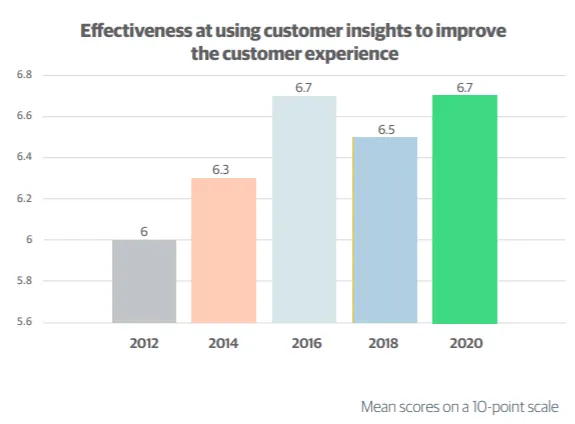
4. Employee Engagement: A steady climb
Employee engagement has continued to improve as organizations make the connection between employee experience and the quality of the customer experience. “If you look at where companies started in 2012, there has been significant growth,” LeBlanc noted. Areas where respondents made the most improvement include “trains employees on how their role impacts the customer” (15% increase since 2012), and “trains employees to deliver a consistent experience across interaction channels” (9% increase).
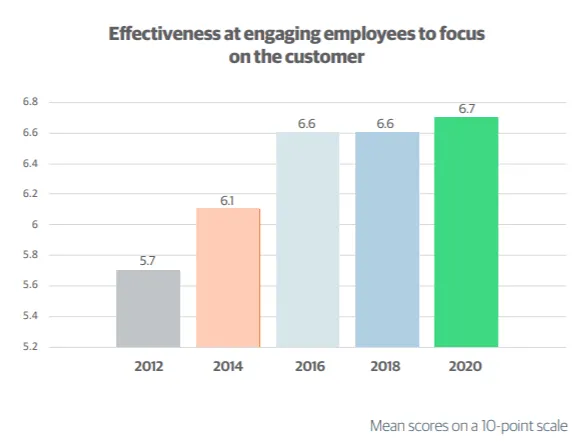
5. Measurement & Rewards: Still needs improvement
While organizations are getting better overall at measuring and rewarding employees for customer centricity, a deeper dive into the data shows that only 14% of executives in 2020, down from 20% in 2018, had corporate compensation tied to customer loyalty or a related measure. It’s “disappointing that companies are still struggling to link executive compensation to customer experience,” LeBlanc says. Until organizations essentially monetize CX improvements, she anticipates true customer centricity will continue to be a challenge.
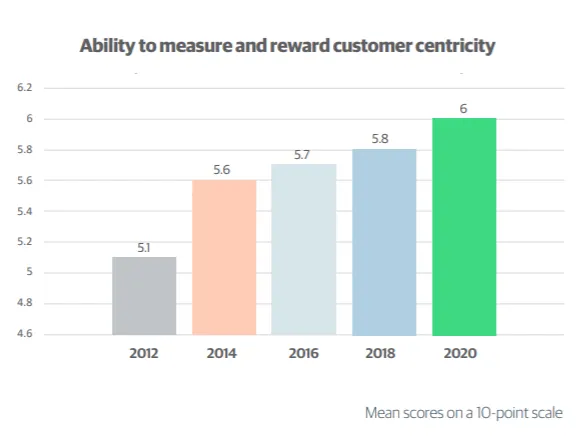
A customer-centric future
Acknowledging the importance of customer centricity is one thing but as business leaders are learning, making it intrinsic to their operations, culture, and business model is a challenging endeavor that never truly ends. However, companies are making enormous progress and in a quickly evolving world, focusing on the customer remains a proven way for businesses to build resiliency and thrive.












